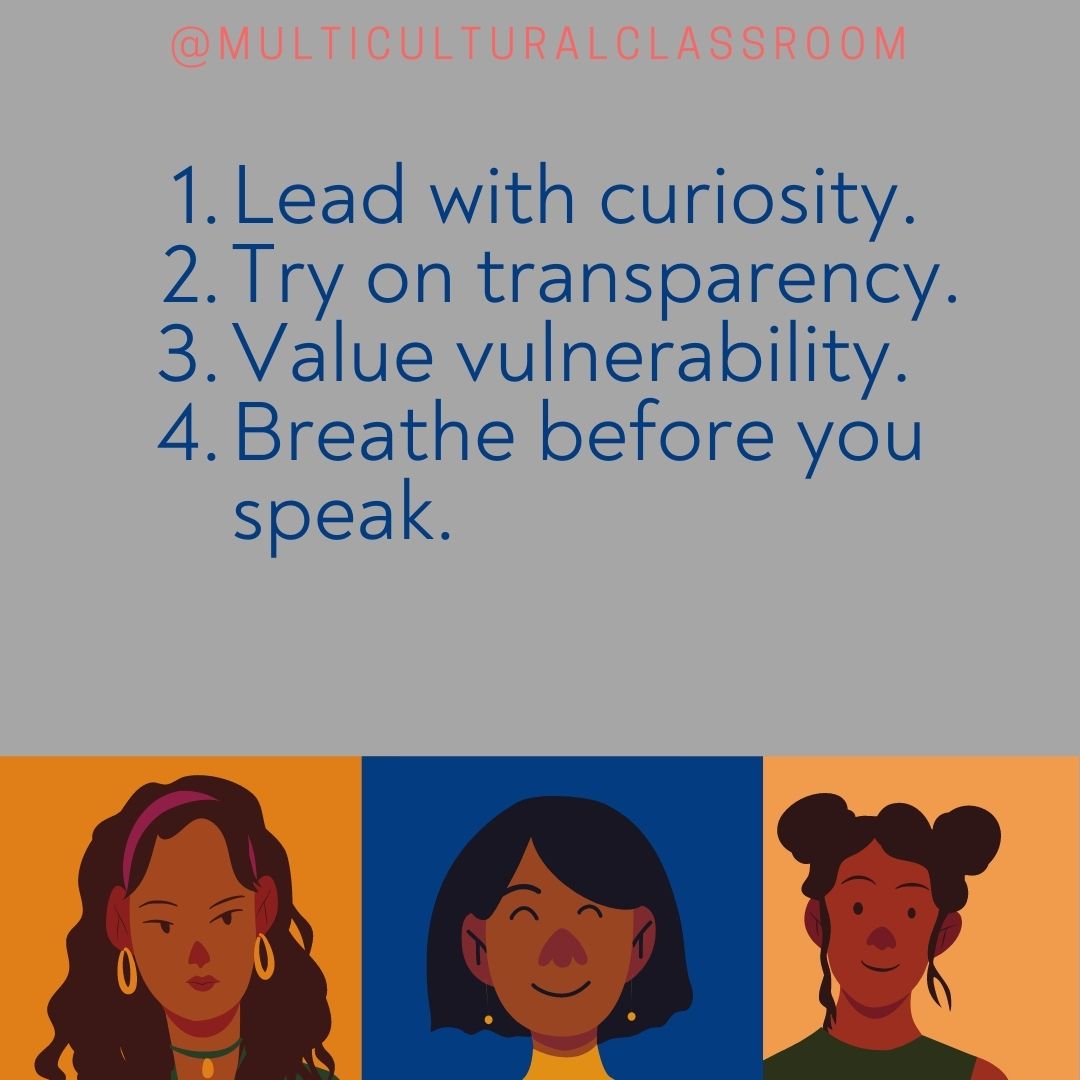
You need a discussion protocol.
May 20, 2022Addressing difficult or tense conversations in a classroom is difficult enough, without being prepared with a set of norms or protocol. Not only can the topics be tense, but the process of the conversation can be challenging if people are not aware of what is appropriate or how to participate effectively. Ask yourself:
- How will I make sure that all students feel able to participate?
- How will I make sure the process to participate is clear to everyone?
- How will I ensure that there are pauses and the pace allows for reflection?
- How will I address conflict if/when it arises?
And I’m sure that if we sat here, we could come up with more questions that help us prepare for the various scenarios that can arise during a group discussion. Additionally, studies show that cognitive bias impacts teaching practices, including our choices and student interactions. Therefore, we have to be open to checking ourselves because it’s possible that our procedures are not equitable and welcoming to all students. For example, you may favor outspoken students during class discussions vs the quieter ones who need more prompting. You might favor a debate-style discussion format vs a Socratic discussion format and certainly some students gravitate to one more than another.
Lastly, how the conversation flows and how participants interact, must also be an utmost concern. This is what norms are for. At Multicultural Classroom we use four norms when facilitating a discussion.
- Value vulnerability: We want participants to be vulnerable with one another. If someone in the conversation has decided to share something valuable and vulnerable we honor that person and that moment by being respectful and listening with an open heart, as much as possible.
- Try on transparency: We ask all participants to be themselves, to be honest, and be authentic. They are not expected to speak on behalf of an entire identity group, and we ask that participants respect that while we might belong to identity-based groups, we are also individuals.
- Breathe before you speak: So much can be said ‘in the moment’ and after harm has been done, it’s difficult to take it back and restore the group’s dynamics. So, we invite participants to think and breathe before speaking so as to consider whether or not it is something to be shared. It’s also an opportunity to consider how much air time or participation time they’re taking up.
- Lead with curiosity: When things are said and the comments are questionable or harmful, we ask that participants ask questions instead of immediately drawing judgment. Asking the participant to clarify or explain what they’ve said allows that person to redirect themselves or change their wording to communicate themselves more effectively.

There are times where we’ve added more norms or found that in a particular situation one norm was more important than the other. One important key to effective facilitation is flexibility; following the group and meeting their needs vs ours as facilitators.
While we invite you to borrow our protocols, we also encourage you to explore the ones your students may want to add to this list. If they play a role in the creation of those norms, they are much more likely to actually participate and practice them since they will feel ownership over them.
We wish you the best in classroom conversations.
Don't miss a beat!
Get our blog delivered to your email whenever we post!
We hate SPAM. We will never sell your information, for any reason.


